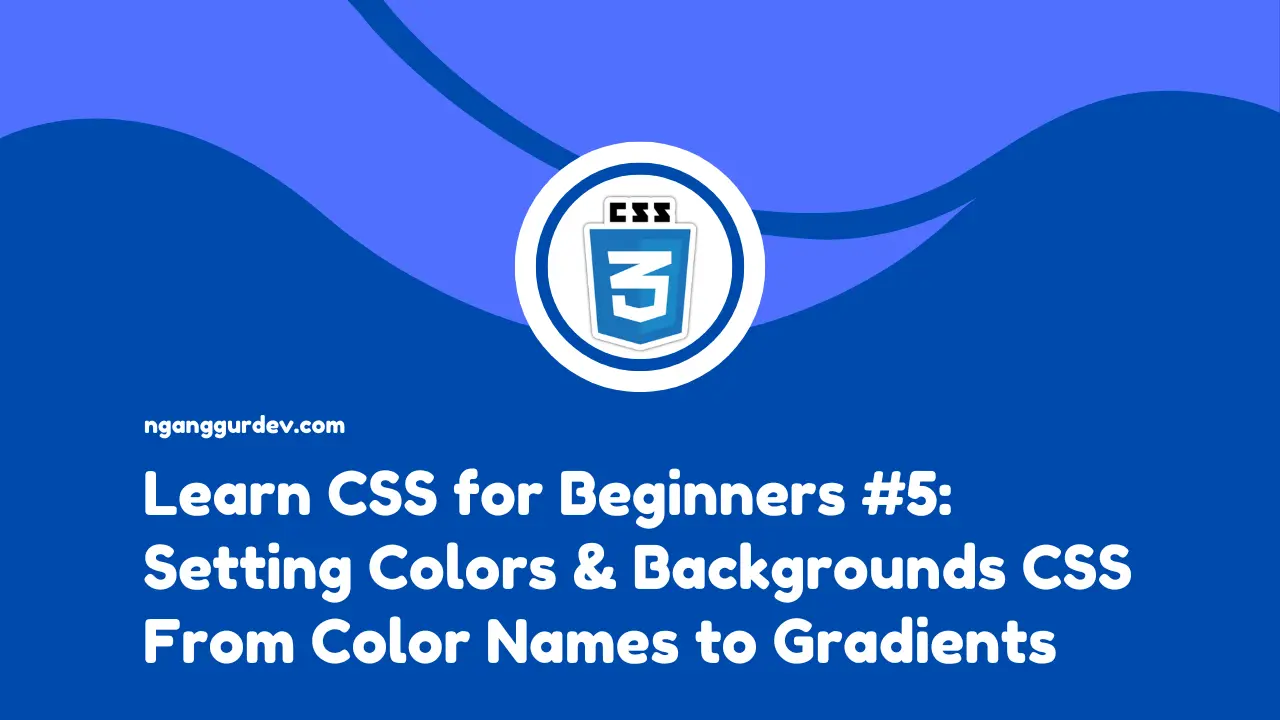The visual appearance of a website is an important element in attracting visitors. The use of colors and backgrounds is one of the most important aspects of website design. With CSS, we can set text colors, background elements, and even create beautiful gradient effects. In this article, we will discuss in detail how to set colors and backgrounds in CSS from using color names to creating gradient effects on backgrounds.
Color Properties in CSS
Before that, we need to first understand what properties are used to set colors in CSS.
colorSets the color of the textbackground-colorSets the background color of the element. Each example of its use is as follows.
p {
color: red;
background-color: gray;
}
Determining Colors in CSS
There are several ways to determine colors in CSS, as follows.
- Color Names
It is common to specify colors in CSS using color names. CSS also supports approximately 140 standard colors.
p {
color: crimson;
}
- Hexadecimal Code (HEX Code)
This format uses numbers and letters after the # sign.
div {
background-color: #0f0f0f;
}
- RGB (Red, Green, Blue)
This format specifies colors using a combination of red, green, and blue values.
div {
background-color: rgb(255, 0, 0);
}
- RGBA (Red, Green, Blue, Alpha)
Similar to RGB, but with an additional Alpha value for transparency (opacity). The minimum value for alpha is 0, and the maximum value is 1.
div {
background-color: rgba(0, 0, 0, 0.5);
}
Background Gradient in CSS
We can create color gradients in CSS to create smooth color transition effects. We will use linear-gradient and radial-gradient as examples.
- Linear Gradient
Gradient from top to bottom, left to right, or other directions.
div {
background-color: linear-gradient(to right, #00c6ff, #0072ff);
}
Explanation of the code above:
linear-gradientis a function used to create a linear color gradient.to rightdetermines the direction of the gradient. It can also be set to to bottom, to left, or to top right.#00c6ffis the starting color of the gradient.#0072ffis the ending color of the gradient.
- Radial Gradient
A type of gradient in CSS that creates a color transition radiating from the center point outward, forming a circle or ellipse.
section {
background: radial-gradient(circle, #ffcc70, #ff5757);
}
The explanation of the code above is as follows:
radial-gradientfunction to create a radial gradient.circlespecifies the shape of the gradient. Alternatives include ellipse, closest-side, or farthest-corner.#ffcc70is the starting color of the gradient.#0072ffis the ending color of the gradient.
Tips for Effective Use of Colors and Backgrounds
- Limit the number of primary colors to a maximum of 3-4 to maintain a consistent appearance.
- Match colors to the website theme to create a professional look.
- Use neutral colors like gray or black for small text.
- Don't overuse gradient effects.
- Be consistent in using action colors for buttons, links, or interactive elements so users can easily recognize their functions.
Conclusion
Mastering colors and backgrounds in CSS is an important step in creating an attractive and professional website appearance. By understanding this material, we can create designs that are interactive, responsive, and aesthetically pleasing without having to use images or additional plugins.
Thank you, see you in the next article.

